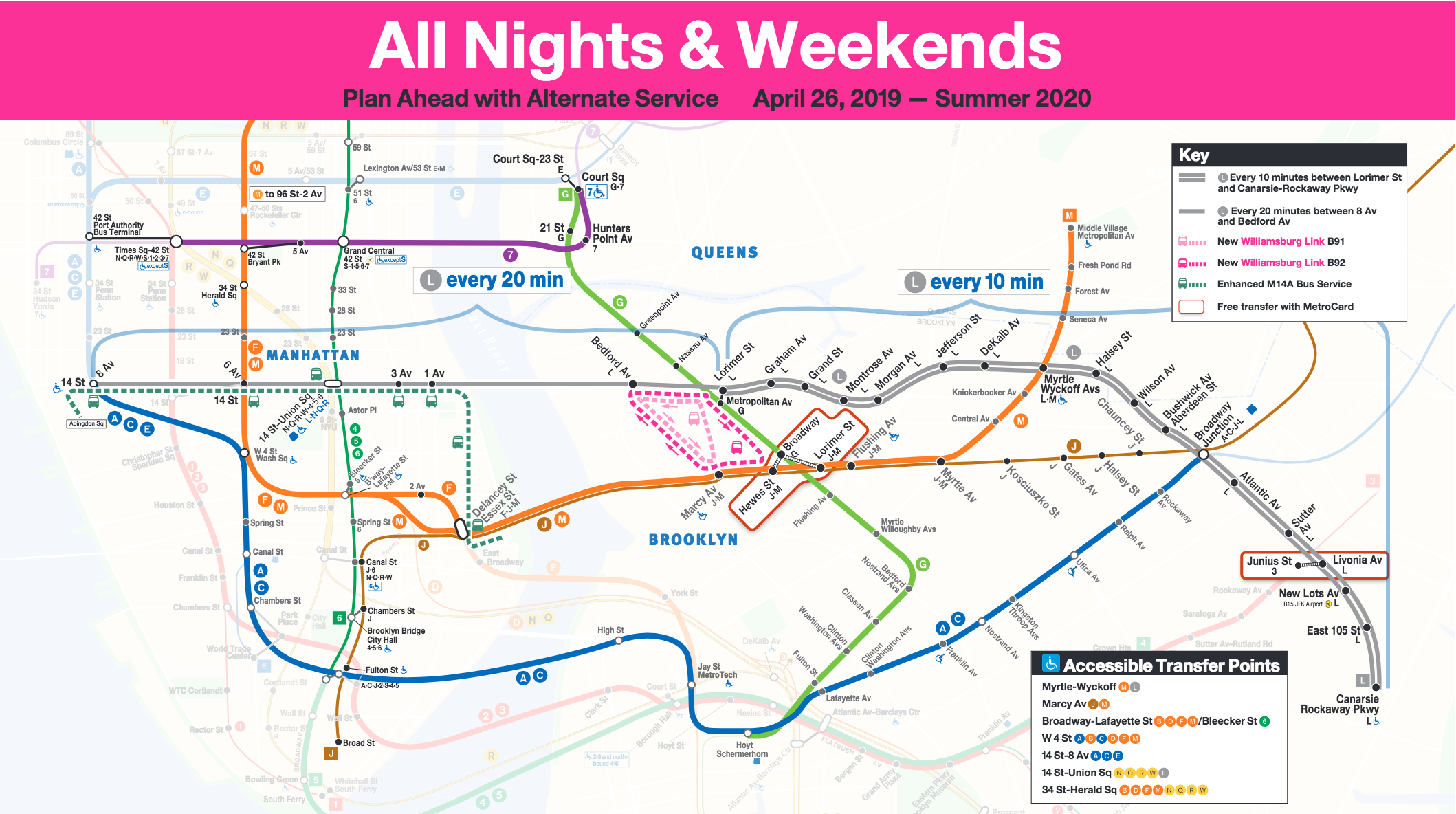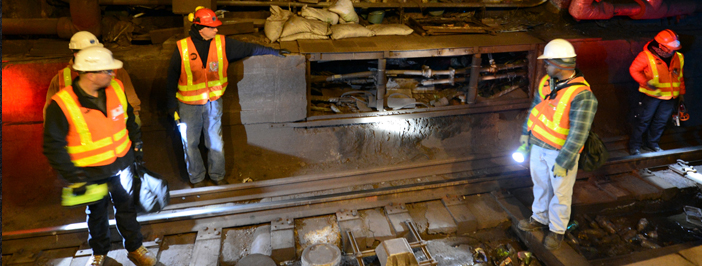“This official statement — which was issued by the New York City Transit division of the Metropolitan Transportation Authority — revealed that massive reconstruction work needed to the Canarsie Tunnel will require a full closure of the tunnel for 18 months starting no sooner than 2019. Service in Manhattan will be suspended during the entire length of the closure of the Canarsie Tunnel; while service in Brooklyn is expected to remain relatively normal.”
Update: Subway Tunnel to NOT Be Completely Closed for 18 Months in New York — Instead, This Is Happening…
The paragraph you just read was from this article which I wrote on Tuesday, August 9, 2016 pertaining to the necessity of repairing a vital link in the subway system in New York while simultaneously ensuring the safety of passengers with as little inconvenience as possible…

…but interestingly, an alternative solution was apparently figured out through which the critical reconstruction work can supposedly be performed and completed within 18 months without having to completely shut down the Canarsie Tunnel, as this announcement from the Metropolitan Transportation Authority pertains to the latest update in relation to the project:
L service will continue as normal during peak and midday weekday times. Service on the L will be reduced nights and weekends. During these times, use our new alternative service options on this map to avoid wait times and crowding.
This service plan will be in effect on nights and weekends, starting at 8 p.m. on Friday, April 26, 2019, through summer 2020. Starting on June 8, 2019, we will roll out a new version of the Williamsburg Link bus service, introducing the B91A to replace the existing B91 and B92.
In addition to extra buses and bus lines, the G, M and 7 lines will also experience increased or extended service during the reconstruction of the Canarsie Tunnel.
Recapitulation
Several alternative options had been considered for passengers of the L line — including but not limited to increased and enhanced bus service; possible ferry service across the East River; ride share options; bicycle sharing options; bolstering train service along lines such as the G, J and M; and reconstruction to last as much as an excruciating 36 months without having to completely shut down the Canarsie Tunnel.
The Canarsie Tunnel carries trains of the L line under the East River between Brooklyn and Manhattan; and the trains pass under neighborhoods such as Williamsburg which have experienced gentrification and a resurgence in popularity in recent years — resulting in the L line to grow over the past decade into one of the busiest subway lines in New York, as it is used by greater than 225,000 commuters every weekday. Ridership on the L line has more than tripled since 1990, which has resulted in it becoming the tenth largest subway in North America; and use of the Bedford Avenue subway station alone has quintupled, according to this article from the Metropolitan Transportation Authority. “This growth has fueled unprecedented revitalization of housing and business development in several neighborhoods along the line.”
The damage to the Canarsie Tunnel has been described as “catastrophic”, superseded in magnitude only by the destruction to the subway system underneath the former World Trade Center as a result of the terrorist attacks which occurred on Tuesday, September 11, 2001 — and a complete reconstruction of the tunnel is the only way to assure safety for subway passengers who use it.
Included in that article is this video pertaining to reconstruction of the Canarsie Tunnel, which first opened to the public 95 years ago in 1924.
The Canarsie Tunnel — named for the neighborhood in Brooklyn which serves as the eastern terminus for the L line — was substantially damaged with approximately seven million gallons of salt water caused from flooding by Hurricane Sandy back on Monday, October 29, 2012.
Summary
As a former passenger of the L line, I have been through the Canarsie Tunnel literally hundreds of times over the course of nine years. I have experienced countless times with which service has been interrupted on this line, which includes changing trains at the Atlantic Avenue station from one L train to another — effectively temporarily splitting the L line into two “separate” lines; and catching either the A or J trains at Broadway Junction or the M train at Myrtle Avenue.
The L line is the only major subway line in New York which does not share a track with any other subway line; and it has always been a local line with no express train service — except in unusual situations — so alternative options are not as easy as they would be for most of the other subway lines. The L line used to be the proverbial stepchild of the subway system before its significant increase in popularity and its receiving the latest in technology pertaining to the trains which run on it.
For the first time, a free transfer is offered to passengers in the East New York section of Brooklyn between the Livonia Avenue station on the L line and the Junius Street station on the 3 line. Not only should this free transfer be permanent and not temporary; but building permanent infrastructure to support this free transfer should be considered, as it offers another viable option.
That the Metropolitan Transportation Authority is being proactive about the future of the Canarsie Tunnel is good for riders of the L line; and hopefully it will lead to further improved service in the future…
…but this current plan is designed to have the least significant impact on the ridership of the L line through the Canarsie Tunnel while still performing the necessary repair work.
Although summer 2020 sounds rather vague in terms of when the completion of the reconstruction of the Canarsie Tunnel is to occur, October 26, 2019 is 18 months later than April 26, 2019; so the work may actually be completed sooner than originally expected — and if that is true, that is even better news…
…as well as in plenty of time for 2024, when the Canarsie Tunnel will celebrate 100 years in existence.
